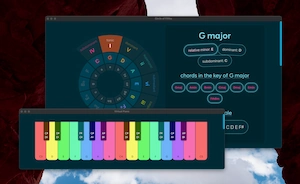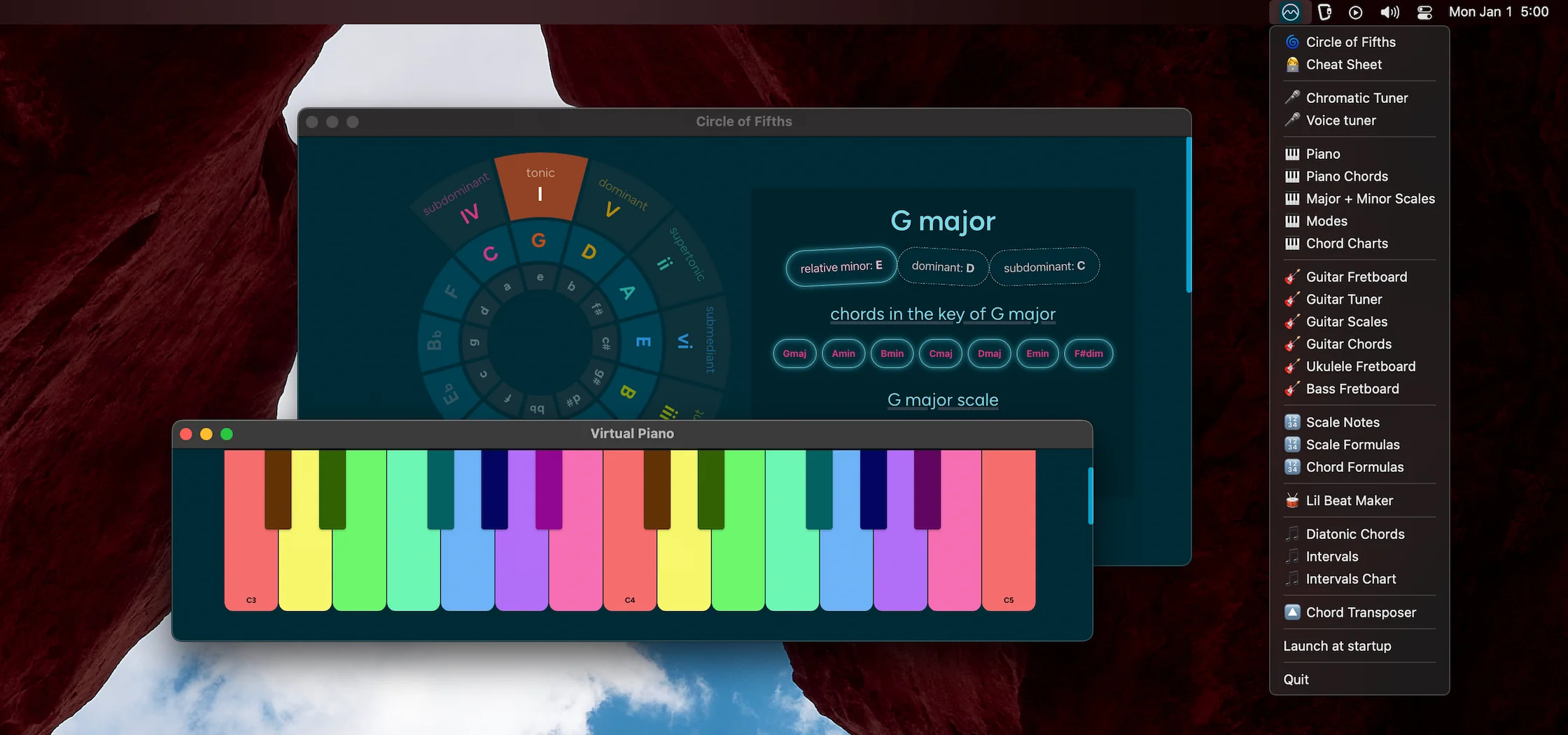Music Definitions & Musical Terms
Here are some short and sweet definitions to common music and music theory questions and terms. More definitions should be coming up soon.
What is a scale in music?
In music, a scale is a sequence of notes in ascending or descending order of pitch. The most popular scales in Western music are sequences of 7 notes, also called heptatonic scales. Examples of 7-note heptatonic scales are major and minor scales. Another popular type of musical scale are 5-note scales, known as pentatonic scales.
What is a chromatic scale?
Chromatic scale is the name given to the sequence of 12 notes that are each a half step (semitone) apart from one another. The chromatic scale is the basis for tonal music and is the pitch system used by most musical instruments. Other scales, such as diatonic scales, are subsets of the 12-note chromatic scale.
What is a diatonic scale?
A diatonic scale is a 7-note (heptatonic) scale with 5 whole steps (whole tones) and 2 half steps (semitones) per octave and where the 2 half steps are distanced apart by either 2 or 3 whole steps. The major scale and the natural minor scale are two examples of diatonic scales.
What is a major scale?
A major scale (aka Ionian mode) is a 7-note diatonic scale. Major scales are very popular in Western music and chords constructed from the notes of a major scale tend to sound happy and uplifting. The pattern of a major scale is W-W-H-W-W-W-H, where W stands for whole step (whole tone) and H stands for half step (semitone).
What is a minor scale?
A minor scale (aka natural minor scale or Aeolian mode) is a 7-note diatonic scale. Minor scales are popular in Western music and chords constructed from the notes of a minor scale tend to sound sad and melancholic. The pattern of a minor scale is W-H-W-W-H-W-W, where W stands for whole step and H stands for half step.
What is a harmonic minor scale?
A harmonic minor scale is a natural minor scale where the 7th degree of the scale is raised by a half step (semitone). That 7th degree then becomes a leading-tone instead of a subtonic. It sounds exotic and works well to create harmonies.
What is a melodic minor scale?
A melodic minor scale is a natural minor scale where the 6th and 7th degrees of the scale are each raised by a half step (semitone). Melodic minor scales are often played the same as a natural minor scale when going down the scale. Melodic minor scales work well to create melodies.
What is a pentatonic scale?
A pentatonic scale is a scale that contains 5 notes per octave. Popular pentatonic scales are the major pentatonic scale, where the 4th and 7th scale degrees are omitted from the major scale, and the minor pentatonic scale, where the 2nd and 6th scale degrees are omitted from the natural minor scale.
What is a key in music?
A key is the collection of pitches that act as the foundation of a piece of music. The key is derived from the pitches of a major or minor scale. For example, a song can be in the key of D major, where it uses the pitches of the D major scale. Once a key is established for a piece, chords from that key can be derived.
What is a time signature?
A time signature is a notation convention that specifies the number of beats per measure and the note value of a beat (e.g. a beat is a quarter note). The time signature is written on a musical staff with the numerator (number on top) indicating the number of beats per measure and the denominator (number at the bottom) indicating the note value of a beat. Check out this explanation of 6/8 time signature or the 4/4 time signature.
What is an interval in music?
A music interval is the distance between two notes. Each interval has a particular sonic quality. Intervals are named by their quality (minor, major, perfect, augmented or diminished) and a number (2nd, 3rd, 4th, 5th, 6th, 7th). Intervals can be played melodically one note after the other, or harmonically as in with a chord.
What is an accidental in music?
An accidental is the name of a symbol which acts as a pitch modifier. These accidental symbols are used to either raise or flatten the pitch by one or two half steps (semitones). The 5 possible accidentals are sharp (♯), flat (♭), natural (♮), double flat (♭♭) or double sharp (𝄪 or ♯♯).
What is a measure in music?
A measure is a section of notes with a specific length, as defined by the time signature of the music. For example, a time signature of 4/4 means that a measure will have 4 beats and that each beat within the measure will be a quarter note in length. On a musical staff, a measure is divided by bar lines.
What is a bar in music?
A bar in music refers to the same as a measure, meaning a segment of a piece of music that contains a specific number of beats over a specific duration. The words bar and measure used interchangeably. The word bar comes from the bar lines on a staff which separate a measure.
What is a scale degree in music?
A scale degree is the position of a note within a scale. Scale degrees are numbered, and diatonic scales like the major or natural minor scale also have named scale degrees (e.g.: Supertonic, Mediant, Subdominant, Dominant,...) The scale degree names refer to their function/quality within the scale.



